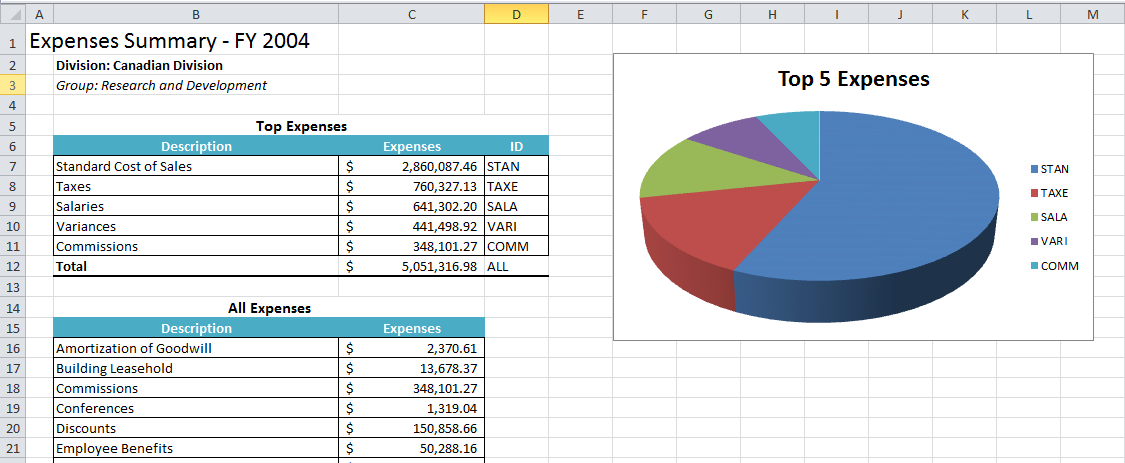Table of Contents | ||||
|---|---|---|---|---|
|
Intro
| Infonote |
|---|
This is Part 3 of a 3-part tutorial series for the Simple Expense Summary scenario. It is recommended that you complete Part 1 - Getting Started and Part 2 - Working with Formulas before starting this section. |
| Info | ||
|---|---|---|
| ||
There is a downloadable ExcelWriter_Basic_Tutorials.zip with completed templates and code. The completed example of the template is available under templates/part3_template.xlsx), page (Part3.aspx), and code behind (. The code for this part of the tutorial can be found in Part3.aspx.cs) are included in the SimpleExpenseSummary project available for download as part of the ExcelWriter Basics Tutorials. |
This part focuses on adding some an Excel formulas chart to the template file from Part 12. Specifically, this covers adding and formatting a pie chart in the template file. We will only be modifying the template file. There are no changes to the code from Part 2.
...
4. Right click on the empty chart and select click 'Select Data...' from the menu options.
...
7. Click in the Series Values box and then select C5C7. Then click OK.
This will put the formula =Sheet1!$C$7 as the formula for the series values. When ExcelWriter inserts data, this formula will expand to include the new rows, so all the top 5 expenses data will be included in the chart series.
...
This will put the formula =Sheet1!$D$7 as the formula for the category axis values. In Part 2 we added a formula in D7 to generate 4-charater character labels from the Description field in Top Expenses.
...
You will see that the pie chart is pulling the data from C7:C11 and the labels from D7:Dll.

Final Code
| Note |
|---|
For information about writing this code |
|
, see Part 1 - Getting Started . |
| Code Block |
|---|
using SoftArtisans.OfficeWriter.ExcelWriter;
...
ExcelTemplate XLT = new ExcelTemplate();
XLT.Open(Page.MapPath("//templates//part1_template.xlsx"));
DataBindingProperties dataProps = XLT.CreateDataBindingProperties();
object[] valuesArray = { "FY 2004", "Canadian Division", "Research and Development" };
string[] columnNamesArray = { "FiscalYear", "Division", "Group" };
XLT.BindRowData(valuesArray, columnNamesArray, "Header", dataProps);
DataTable dtTop5 = GetCSVData(Page.MapPath("//data//Part1_Top5Expenses.csv"));
DataTable dtAll = GetCSVData(Page.MapPath("//data//Part1_AllExpenses.csv"));
XLT.BindData(dtTop5, "Top 5 Expenses", dataProps);
XLT.BindData(dtAll, "All Expenses", dataProps);
XLT.Process();
XLT.Save(Page.Response, "Part1_Output.xlsx", false);
|
Downloads
You can download the code for the Basic ExcelWriter Tutorials as a Visual Studio solution, which includes the Simple Expense Summary.
- OfficeWriter-Basics-csharpExcelWriter_Basic_Tutorials.zip